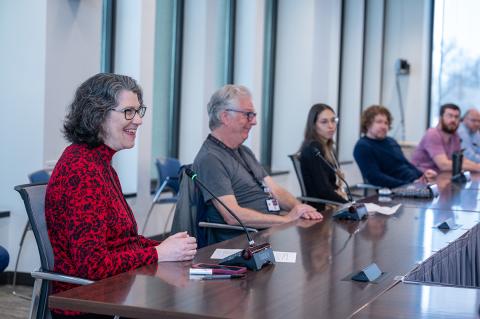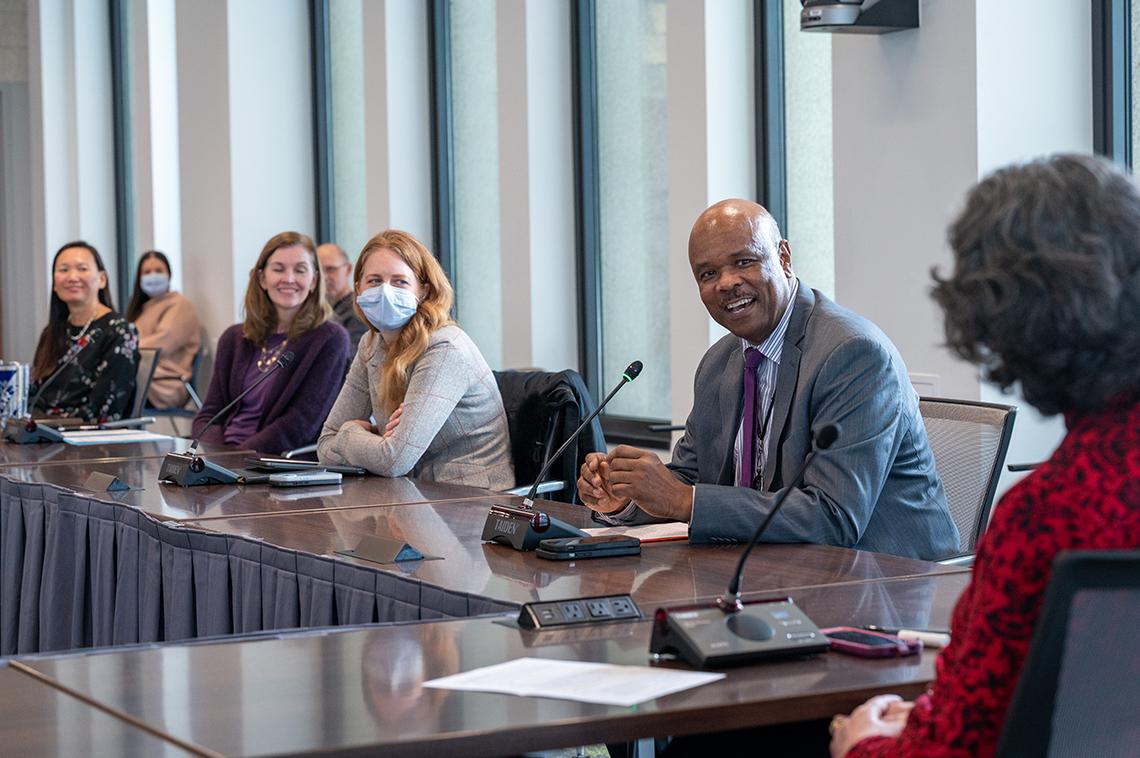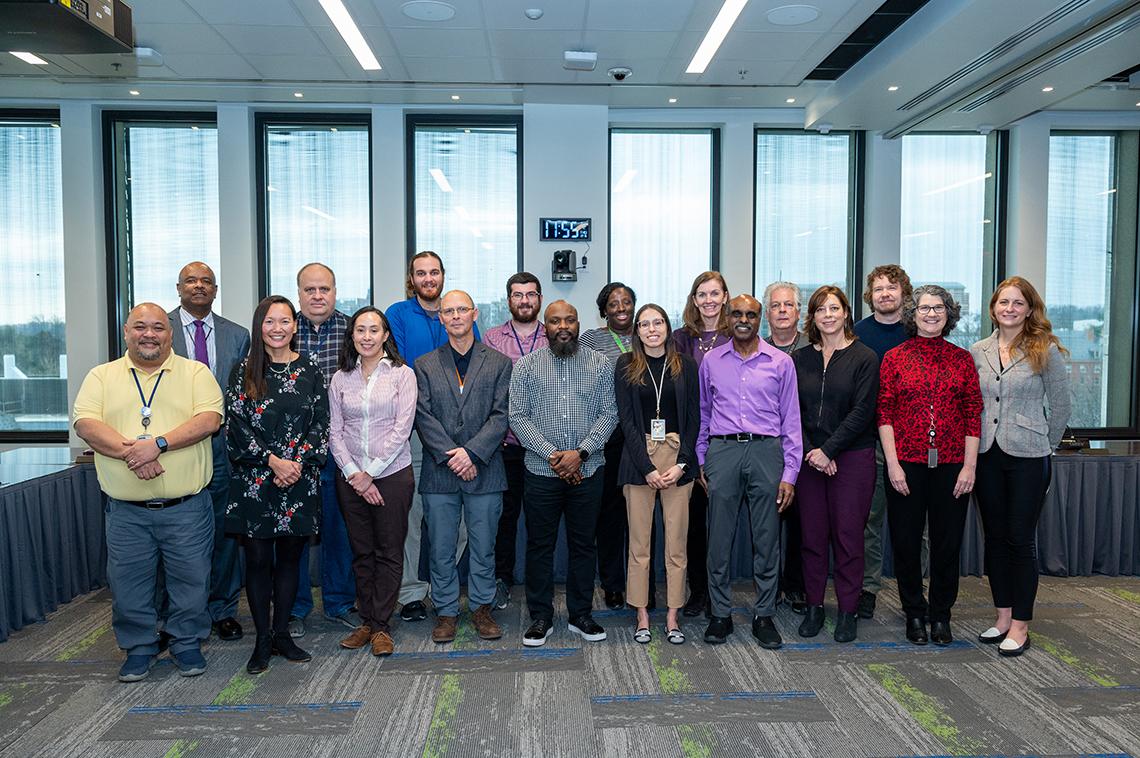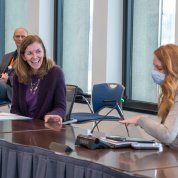NIH Leadership Recognizes DRS Efforts During Pandemic

Photo: Leslie Kossoff
At the latest “Gratitude Tour” stop, NIH leadership thanked ORS’s Division of Radiation Safety (DRS) staff for ensuring radiation sources and radioactive materials used in biomedical research were handled safely during the pandemic.
“I want to express my gratitude for the countless hours you all have put in to keep the NIH community safe and to keep our biomedical and clinical research moving forward,” said NIH Acting Principal Deputy Director Dr. Tara Schwetz at the event held in a Bldg. 31 conference room. “Thank you all for the essential work that you do.”
DRS provides radiation safety guidance, regulatory compliance and risk management for biomedical and clinical research efforts. At NIH, radioactive materials are used for cancer treatments, biological research and in medical imaging. Most of the radioactive material at NIH is not dangerous if handled properly.

Photo: Leslie Kossoff
Even as the Covid-19 pandemic wanes, DRS staff continue to face challenges. They go above and beyond what’s required of them and continue to have each other’s backs under all circumstances, said Dr. Jessica Chertow, ORS associate director of scientific resources.
All members of the division are critical for ensuring that NIH meets its mission, she added. Without the expertise of staff confirming that protocols are followed exactly, safety could be at risk.
Under the “vigilant watch” of DRS Director Cathy Ribaudo and her staff, “not a single individual exceeded allowable limits of radiation exposure in the last year,” ORS Director Colleen McGowan pointed out.
In 2022, Schwetz noted, DRS analyzed almost 94,000 samples for radiological contamination, conducted 8,300 contamination and compliance surveys of NIH labs, scheduled annual safety inspections of 89 x-ray machines and taught 64 in-person training sessions.
All the while, staff had to ensure that NIH was in compliance with Nuclear Regulatory Commission mandates. Last year, inspectors from the commission visited to conduct a rigorous, multi-day review.

Photo: Leslie Kossoff
“We have been through quite a lot of challenges, especially over the last several years through the pandemic,” said Ribaudo. “I value each and every member of this division.”
DRS staff who spoke at the event described a supportive environment where co-workers regularly helped each other get the job done. Even though many NIH’ers were on maximum telework during the Covid-19 outbreak, radioactive materials still arrived at NIH. Last year, for example, more than 5,000 packages were delivered to campus.

Photo: Leslie Kossoff
For more than a year during the pandemic, only two employees were receiving, delivering and transferring radioactive materials. They had to be on site to accept shipments and sometimes personally transport them to Rockville, Poolesville or Baltimore.
When they needed help, their co-workers on other teams stepped up to keep shipments on schedule. In many cases, package deliveries wouldn’t have been delivered on time had colleagues not covered each other’s backs. They also worked together with clinical care staff to make sure patients at the Clinical Center were supported in their radiation therapy.
“I truly appreciate your hard work and commitment to advancing the NIH mission and helping to ensure safety at NIH,” concluded NIH Deputy Director for Management Dr. Alfred Johnson.






